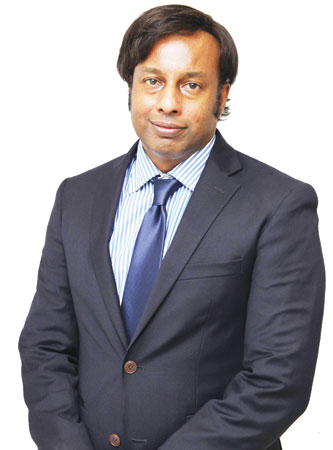TECHNOLOGY
Technologies deployment is what both public and private concerns in Pakistan have focused on to come at par with the western tech ecosystem. They are doing that good somehow, if not perfectly well. Financial and telecom sectors can be cited as two examples. In the race for acquiring technology tools and infrastructure, however, many enterprises overlook the significance of consistent change, which is the hallmark of the dynamic information and communication technology industry. The outcome is a secretly growing IT debt – maintenance backlogs. Gartner has put the global IT debt at somewhere around one trillion dollars.
 Chief Executive Officer Noman Ahmed Said at SI Global Solutions Pvt Ltd believes that in Pakistan most of the IT-enabled service providers are racking up this debt. “It is easy to buy a solution, but sustainability is the problem,” he said.
Chief Executive Officer Noman Ahmed Said at SI Global Solutions Pvt Ltd believes that in Pakistan most of the IT-enabled service providers are racking up this debt. “It is easy to buy a solution, but sustainability is the problem,” he said.
“Technology is redundant. There is need of someone to monitor upgrades,” he added. “Deployment and upgrades work hand in glove.”
Popularly known as system integration, the services are provided by specialists in the IT field. They are like watchdogs to help clients identify their business needs and predetermine operational lifetime of a solution.
Said opined the concept is still evolving in Pakistan. A few big companies in the country have in-house arrangements for disaster recovery. The Central Depository Company has its backup database to recover critical applications in case of emergency.
“It’s very important. Eventualities should be dealt with,” SI Global chief said. “But, when you take external support, fixed costs can be reduced. After all, 90 percent of all the tools are imported. We have resources to cut cost and improve efficiency and escalation level.”
PricewaterhouseCoopers said a better failover plan should be able to restore critical applications within six hours. SI Global, which has offices in Pakistan, Dubai and US, provides data centre solutions and deal with big data, mobile app developments, software as a service and cloud ecosystems.
The company’s chief observed flaws in the tech ecosystem in the country. “We revolve around tech buzzwords. One such is Vision 2020,” he said. “There has to be first a gap analysis. What we actually need and where do we want to reach.”
Said believes a central system needs to be set up to capitalise on the talent pools and resources. “We have talents in abundance. There is no difference in skill set (compared to international markets). Our services are relatively low-priced,” he said. “We need a marketing platform to come in the limelight.”
The turnaround specialist, having 20 years of local and international experience, however, sees growth in the tech use, which, he said is a good sign. “Big data is improving,” he said.
Telecom operators, which are handling tons of data every day, appear to be using the big data tools for contextual marketing. In developed world, consumer-focused enterprises track data to know the target market’s preferences and for product affinity analysis. For example, ecommerce goliaths EBay and Amazon drive their whole business from data warehousing.
In Pakistan, ecommerce space is still in its infancy and not more than Rs2 to 3 billion market a year. Compared with the developed world, the industry size in the region is very small and so is the data explosion, but here the population burst is unmatched, behaviour diversity unparalleled and psychographics largely unexplored.

However, the leading real estate classified Zameen.com in Pakistan is surprisingly making its mark on the back of the indigenous technologies.
Zameen claims to have the biggest database of properties in the country. It has scored two million property listings since its launch in 2006. This helped the site in integrating Pakistan’s first real estate price index in February. The site claimed that the index was the first of its kind in entire South Asia to give the customer an effective price comparison tool fed with the last five-year data.
Industry leaders said analytics is capital-intensive if not quant-intensive. They said the cost factor is a barrier to technology adaptation. Additionally, the country’s internet enabled population is limited to around 30 million users. A huge user base is without the internet. Mobile broadband is penetrating across the country. It is expected to cover the entire country in the near future.
Citing a parking management project, Said explained that electronic governance was bringing automation to facilitate the public and reduced theft incidences. A pending project, he said, was about auto retrofitting by the government. This would give a law enforcer access to a vehicle owner’s data through scanning a number plate.
He said tech developments were more pronounced in Punjab and Khyber Pakhtunkhwa than in Sindh. Technology can be used for energy conservation. “A mobile application can switch on and off the lights. This can done at the mass scale,” he added. DHA is planning a project to regulate street lights remotely through mobile apps.
SI Global head said the government should seek technical assistance from international institutions for IT education reforms. The IT sector, he said, should be given subsidies and a tax holiday. The sector can bring socio-economic changes. It can be instrumental in reducing trade deficit. Modern tech can be used to bring down crime rate and improve civic administration, he added.
The writer is a staff member